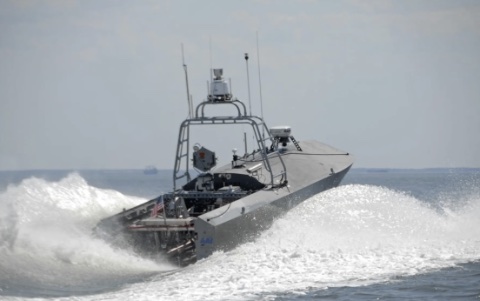
The Office of Naval Research (ONR) recently issued a special notice for the the Magnetic and Acoustic Generation Next Unmanned Superconducting Sweep (MAGNUSS) project. MAGNUSS will be an advanced minesweeping sensor payload to be deployed aboard an unmanned mine warfare boat.
Such a coupled, advanced closed-loop minesweeping system has been in development by the ONR for some time, but they now seek industry partners to integrate the systems for deployment aboard the Mine Countermeasure Unmanned Surface Vehicle (MCM-USV) – a long endurance, semi-autonomous, diesel-powered all-aluminum surface craft that supports the employment of various MCM payloads, and deploys from the Navy’s Littoral Combat Ship. The MCM USV program employs multiple Payload Delivery Systems (PDSs), including the Minesweeping PDS, Minehunting PDS and PDSs for future payloads, and Mine Neutralization. The Navy is in the process of moving the mine countermeasure missions from traditional legacy systems to a suite of mission modules on the Littoral Combat Ship.
MAGNUSS will be composed of a high-temperature superconducting magnetic source with an advanced, non-towed, and low-drag underwater acoustic generator. This will enable it to run at very high electrical currents with near-zero resistance. When coupled to an acoustic generator it will be able to sweep magnetic influence mines.
The entire MAGNUSS project will involve procurement of a high-temperature superconducting magnet and an acoustic generator; integrating mechanical, electrical, and command and controls (C2) systems; integrating the complete payload with the MCM USV and its hull, mechanical, electrical, and C2 interfaces; testing; and an at-sea demonstration of the payload aboard the MCM-USV.
